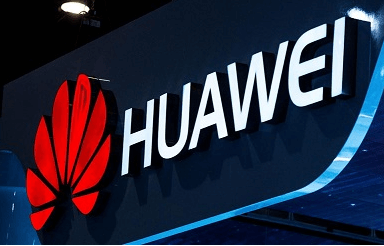Huawei, the leading Chinese technology company, has recently announced its Q1 2020 results amidst the COVID-19 pandemic. The company’s revenue for the first quarter of this year reached CNY 182.2 billion (USD 25.7 billion), representing a year-on-year increase of 1.4%. Huawei’s net profit margin was at 7.3%, which is slightly down from last year’s figure of 8%.
These results demonstrate that despite the challenging circumstances brought by the pandemic, Huawei has managed to maintain its profitability and market position. However, it is important to note that Huawei has been facing numerous obstacles in recent times due to geopolitical tensions with various governments around the world, particularly in relation to concerns over national security and data privacy.
The US government has banned American companies from doing business with Huawei, citing national security reasons, while several other countries have also expressed similar concerns about Huawei’s products and services. In addition to these challenges, the outbreak of COVID-19 has further impacted Huawei’s operations as it disrupted global supply chains and dampened consumer demand for smartphones and other electronic devices.
Therefore, it is crucial to examine how Huawei navigated through these difficulties and what strategies they employed to sustain their business during these trying times.
Overview of Huawei’s Q1 2020 Results
The first quarter of 2020 saw Huawei report a total revenue of 44.73 billion yuan, indicating the company’s financial performance amidst the COVID-19 pandemic.
Despite being blacklisted by the US government and facing numerous challenges, Huawei managed to increase its revenue by 1.4% year-on-year (YoY).
The growth was mainly attributed to strong domestic demand in China, where Huawei is among the leading providers of smartphones and networking equipment.
According to industry analysis, Huawei’s Q1 results demonstrate resilience in times of crisis and confirm its position as a major player in the global technology market.
Nevertheless, uncertainties still lie ahead for Huawei as it continues to face geopolitical tensions and regulatory pressures that may impact its future financial performance.
Challenges Faced by Huawei During the COVID-19 Pandemic
Amidst the global outbreak of COVID-19, Huawei faced numerous challenges that impeded its operations and profitability.
The impact on supply chain was one of the major issues as the company relied heavily on suppliers from China, which was heavily affected by the pandemic during its early stages.
In addition, Huawei’s shift towards remote work resulted in challenges with communication and collaboration among employees.
As a result, many projects were delayed or suspended due to difficulties in maintaining productivity levels.
Furthermore, travel restrictions posed additional hurdles for Huawei’s international operations as face-to-face meetings and business trips became impossible.
Despite these obstacles, Huawei persevered through innovative solutions such as virtual conferences and online collaboration tools to ensure continuity in their operations.
Read also: Amazon India Bengalurusinghtechcrunch
Strategies Implemented by Huawei to Navigate the Pandemic
Huawei, like many companies worldwide, has been forced to navigate the COVID-19 pandemic and its associated economic impacts.
To do so successfully, the company has implemented a range of strategies aimed at diversifying its product portfolio, focusing on domestic sales, and investing in research and development.
These efforts have enabled Huawei to maintain its competitive edge amidst a challenging business environment while also setting the stage for future growth opportunities.
Diversifying its Product Portfolio
To expand its range of offerings, Huawei has been exploring opportunities to diversify its product portfolio. The company has focused on product innovation and market expansion as part of its strategies to navigate the pandemic.
In order to achieve this, Huawei has identified several key areas in which it can broaden its product lineup. These include expanding into new industries such as smart cars and healthcare, investing in research and development for emerging technologies like 5G networks and artificial intelligence, and building partnerships with other companies to create new products that can provide value to consumers.
By diversifying its portfolio, Huawei aims to not only weather the storm of the pandemic but also position itself for long-term growth in a rapidly changing technological landscape.
Focusing on Domestic Sales
One of the current strategies being implemented by Huawei is to focus on increasing its domestic sales within China, as the company seeks to expand its market share and offset the impact of US sanctions.
Despite facing challenges in overseas markets due to geopolitical tensions and restrictions imposed by governments, Huawei has continued to invest heavily in its research and development capabilities, as well as expanding its product portfolio.
The company’s focus on domestic expansion aligns with China’s push for technological self-sufficiency, which has accelerated during the COVID-19 pandemic.
While it remains to be seen whether this strategy will result in sustained growth for Huawei, the company’s efforts towards boosting domestic sales could provide a foundation for future success in global markets.
Investing in Research and Development
Investment in research and development has been a key strategy for many companies seeking to remain competitive in the global market. Huawei is no exception, as evidenced by their increasing investment towards innovation.
The company has been consistently investing at least 10% of its annual revenue towards R&D activities, with a total of $19 billion spent on these efforts in 2019 alone. This focus on innovation culture has allowed Huawei to develop cutting-edge technologies and products such as 5G networks and smartphones that have helped the company maintain its position as one of the top players in the industry.
Despite facing various challenges, including geopolitical tensions and the ongoing COVID-19 pandemic, Huawei remains committed to investing in R&D as they believe it is crucial for their long-term success.
Read also: H1 Yoy Yoy Covid19kirtonreuters
Huawei’s Position in the Global Market
The position of Huawei in the global market is a subject of interest given its competitive stance with other telecom giants. The company has emerged as a leading player in the field, and its growth trajectory has been impressive despite challenges posed by the US-China trade tensions.
An objective analysis of Huawei’s position requires an examination of both its strengths and weaknesses in comparison to other players in the market.
Competition with Other Telecom Giants
Competition in the telecom industry is fierce, and Huawei faces intense rivalry from other giants such as Samsung and Apple. In order to maintain their position in the market, Huawei has implemented a variety of innovation strategies including investing heavily in research and development, developing new technologies such as 5G networks, and expanding their global reach through partnerships with other companies.
Despite these efforts, however, Huawei still faces significant challenges from both domestic competitors in China and international rivals. Additionally, concerns over security threats have led some countries to ban or restrict the use of Huawei’s technology for their own telecommunications infrastructure. As a result, Huawei’s telecom market share has been impacted in certain regions.
Nevertheless, the company continues to pursue its innovative strategies with the goal of remaining competitive amidst this intense rivalry within the industry.
Impact of US-China Trade Tensions
Despite the ongoing trade tensions between the United States and China, the telecom industry has seen significant growth in global demand for mobile devices and network infrastructure. The US-China trade implications have had a notable impact on Huawei, one of China’s leading smartphone manufacturers and a major player in the telecom industry. In May 2019, Huawei was placed on a blacklist by the US government, restricting its access to American technology and suppliers. This move has disrupted Huawei’s global supply chain and impacted its ability to compete with other telecom giants such as Samsung and Apple. However, despite these challenges, Huawei reported strong financial results in H1 2020 with revenue reaching $44.73 billion year-on-year (YoY) growth of 13.1%. While it remains to be seen how long-term US-China trade tensions will play out, the current demand for mobile devices and network infrastructure appears to be driving growth in the telecom industry despite geopolitical uncertainties.
| US-China Trade Implications | Global Supply Chain Impact |
|---|---|
| Restrictions on technology access | Disruption of supply chain |
| Blacklisting of companies | Increased reliance on domestic resources |
| Tariffs on imports | Shift towards local production |
| Negotiations for new trade deals | Diversification of suppliers |
| Political uncertainty | Rising costs for consumers |
Future Outlook for Huawei
Regarding the Future Outlook for Huawei, it is important to consider the potential impact of ongoing political tensions on the company’s growth. Despite being one of the largest telecommunications companies in the world, Huawei has faced significant challenges due to its connection with the Chinese government and accusations of espionage.
The US government’s ban on Huawei technology has further impacted its global expansion plans, limiting access to key markets and hindering technological advancements. Additionally, the COVID-19 pandemic has disrupted supply chains and affected consumer demand.
However, Huawei remains resilient and continues to invest heavily in research and development to maintain its competitive edge. The future outlook for Huawei depends on its ability to navigate these challenges while continuing to innovate and expand into new markets.
Conclusion
China’s Huawei Technologies Co Ltd has reported a YoY increase of 1.4% in revenue for Q1 2020, despite the challenges posed by the COVID-19 pandemic. The company generated CNY 182.2 billion ($25.7 billion) in revenue and net profit margin was up to 7.3%.
This is an impressive result considering that many other companies have taken a hit due to global lockdowns and supply chain disruptions. Huawei’s ability to maintain its position in the market is largely due to strategies implemented during this unprecedented time, such as expanding their online services and diversifying their product range. However, with ongoing tensions between China and the US, Huawei faces uncertain times ahead. It remains to be seen how they will manage these challenges moving forward.
One interesting statistic that reflects Huawei’s success is their smartphone shipments in Q1 2020, which saw an increase of 6% YoY to reach 49 million units shipped. This figure highlights how Huawei continues to thrive despite geopolitical tensions and uncertainty caused by COVID-19.
As we move into the second half of the year, it will be interesting to see how Huawei adapts further and what impact this has on their future growth prospects.







